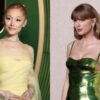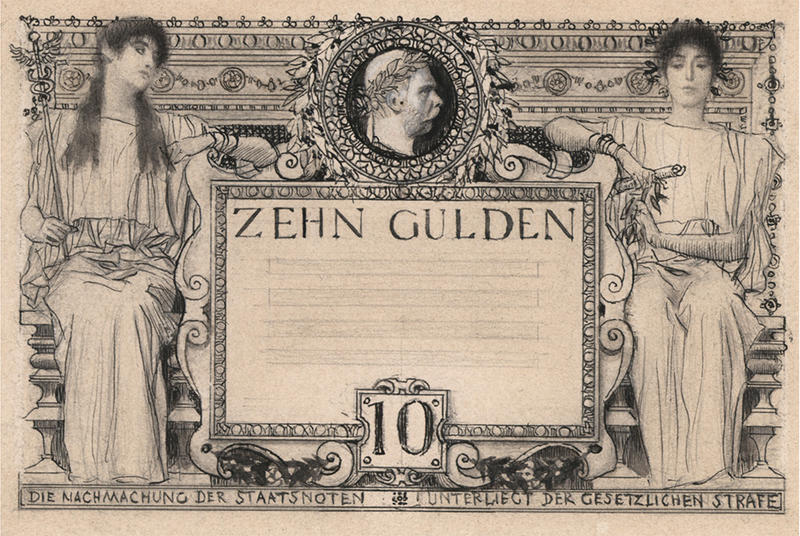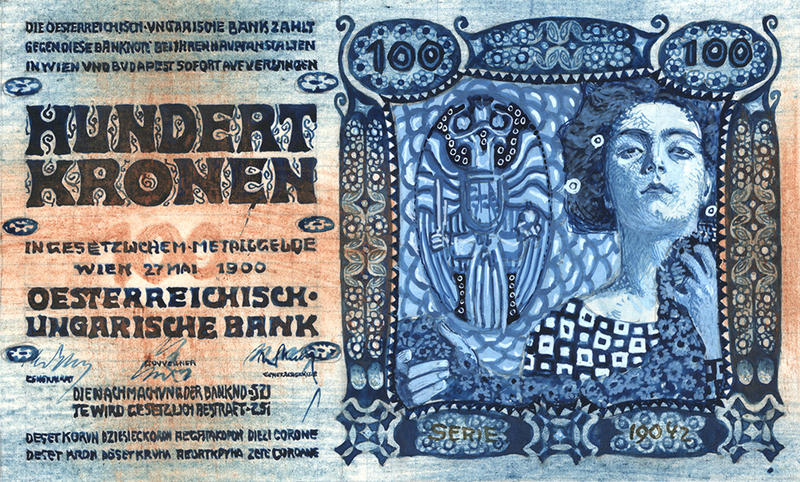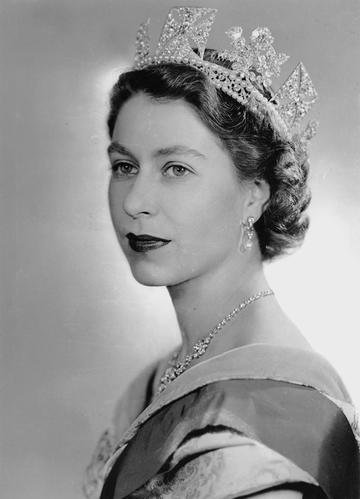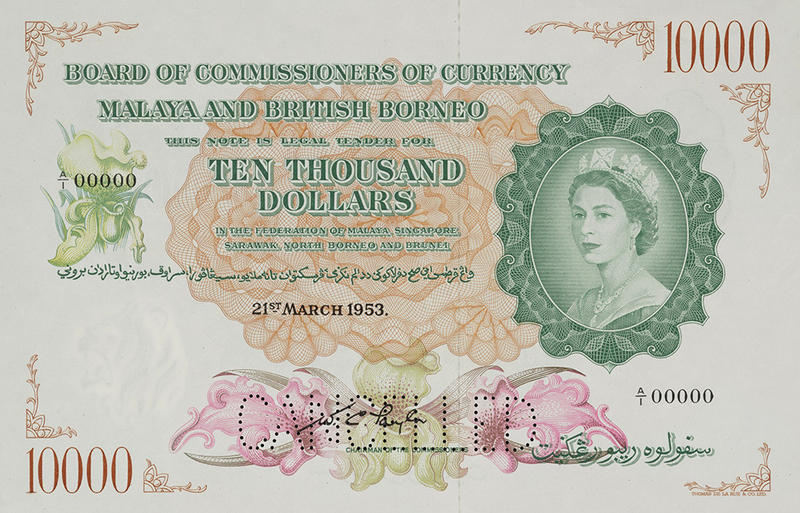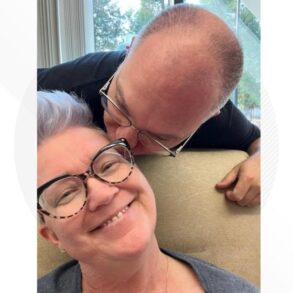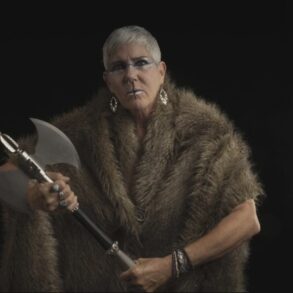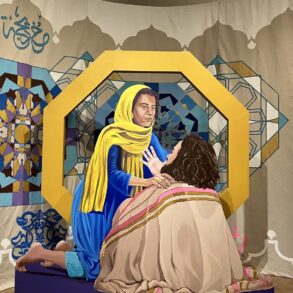Women often appear on modern money anonymously as representations and allegories.
The imagery can be contextualised with popular artistic styles such as Art Nouveau and Art Deco. The engagement of Viennese Avant-Garde artists of the turn-of-century ‘Secessionist’ period with money design is hardly ever known. But it is a fascinating story of how tradition and innovation lock horns when it comes to designing money with its potential for circulating loaded messages.
Franz Matsch’s note artworks featuring an allegorical, sword-wielding woman are reminiscent of the German Historicist art school, comparable closely to his frescoes in the Burgtheater in Vienna.
The artwork for banknotes produced by a young Gustav Klimt pre-empts his Jugendstil genius with regard to its woman motifs. They are instantly recognisable with their dreamy eyes, fuzzy hair, loose faux-Classical dress and a rigid ‘Egyptian’ posture.
Dreamy-eyed women also feature on banknote artworks proposed by Koloman Moser – the only artist who made it to a final product in circulation.
The other Viennese artists, including Klimt, were rejected by the Imperial Austro-Hungarian Bank authorities because they had ‘very little appeal’!
Perhaps the most familiar woman to appear on money was the late Queen, Elizabeth II.
No less than 33 issuing authorities across the world have issued banknotes with her image and there are 31 different ‘monetary portraits’ showing her at different stages in her long life. Most are based on photographs taken by famous photographers which were re-engraved for use on money by artist-engravers.
Dorothy Wilding stands out amongst these as a pioneering 20th-century woman photographer. Stopped by her family from pursuing an acting or a painting career, she rebelliously declared, ‘I’ll do it through the camera instead’. She began carving out a career as a top society portrait photographer, becoming the first woman official royal photographer for George VI’s coronation in 1937 and receiving a Royal Warrant in 1943.
The royal connection and the striking simplicity of Wilding’s portraits meant she was also the first choice to photograph Queen Elizabeth II for the new coins, banknotes and stamps in 1953.
The Queen’s monetary portraits based on Wilding’s photographs are by far the most widespread, appearing on banknotes of no less than 15 countries across the globe.
The honour of having one’s likeness grace a coin or a note is still largely reserved for men. Very few female figureheads adorn international currencies. Using money as a medium, some contemporary artists have reclaimed the banknote as a space to voice feminist political protest.



